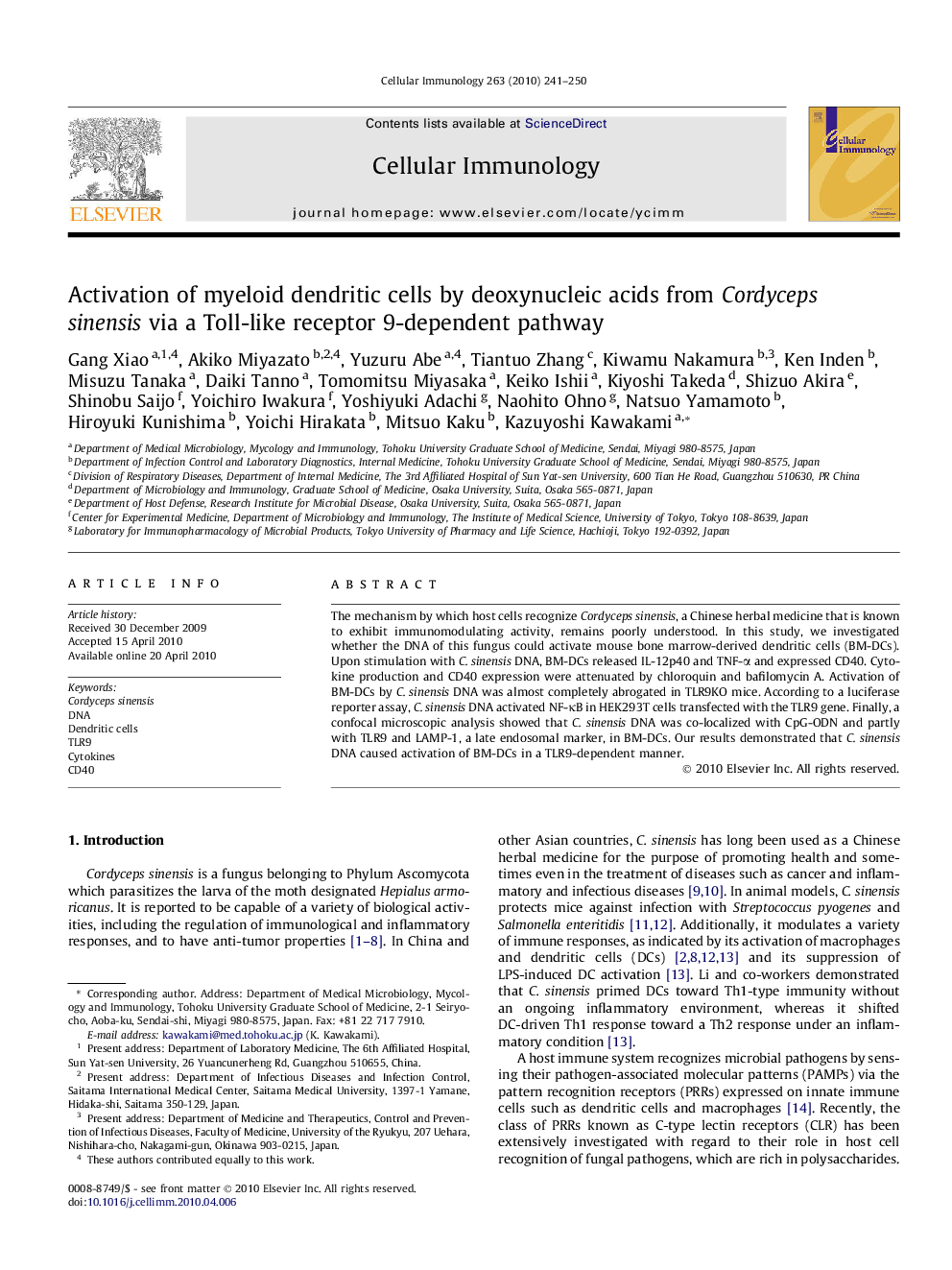| Article ID | Journal | Published Year | Pages | File Type |
|---|---|---|---|---|
| 2167598 | Cellular Immunology | 2010 | 10 Pages |
The mechanism by which host cells recognize Cordyceps sinensis, a Chinese herbal medicine that is known to exhibit immunomodulating activity, remains poorly understood. In this study, we investigated whether the DNA of this fungus could activate mouse bone marrow-derived dendritic cells (BM-DCs). Upon stimulation with C. sinensis DNA, BM-DCs released IL-12p40 and TNF-α and expressed CD40. Cytokine production and CD40 expression were attenuated by chloroquin and bafilomycin A. Activation of BM-DCs by C. sinensis DNA was almost completely abrogated in TLR9KO mice. According to a luciferase reporter assay, C. sinensis DNA activated NF-κB in HEK293T cells transfected with the TLR9 gene. Finally, a confocal microscopic analysis showed that C. sinensis DNA was co-localized with CpG-ODN and partly with TLR9 and LAMP-1, a late endosomal marker, in BM-DCs. Our results demonstrated that C. sinensis DNA caused activation of BM-DCs in a TLR9-dependent manner.
